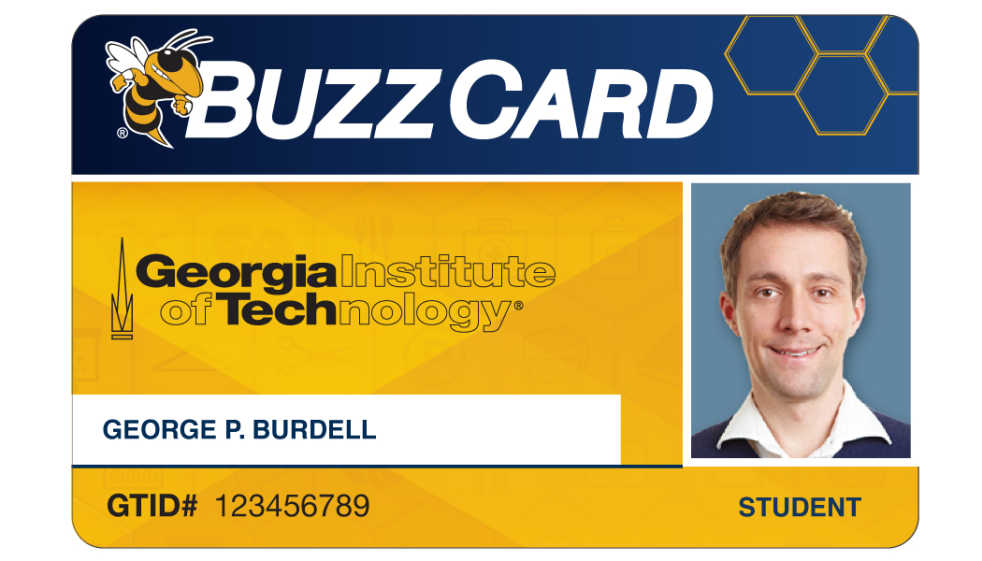In the coming months, Tech’s BuzzCard will be replaced for the first time in 13 years, featuring new technology upgrades for all students. With this improvement in the credential technology on student IDs, the university has also taken advantage of the opportunity to change the graphics of the card as well. The new card is blue and yellow, with a honeycomb design on the top.
Lindsay Grooms, IT Service and Delivery manager, described the redesign as an easy way to differentiate between new and old BuzzCards and know immediately which technology was included on both.
The new layout for the cards will also include a space for students’ preferred names, a feature Grooms says is becoming more popular amongst universities.
“There’s a movement within higher education right now to look at incorporating preferred names on student identifications, whether that be a campus card or even on a class roster within the academic area,” Grooms said.
While the visual design of the cards is a noticeable difference, the most notable upgrade will be the shift away from the current proximity technology to “smart contact-less” technology.
Smart contact-less enabled cards operate similarly to credit and debit cards which contain a security chip in them. However, in the new BuzzCards, the chip is embedded within the card itself and is not visible.
Grooms said that the new technology will both simplify the BuzzCard system and increase security. “It’s a similar technology [to chip technology], and it allows for enhanced security, more encryption for the transactions that are being processed, and it also allows for ‘tap-and-go,’ so there’s no insertion of the card into a reader,” Grooms said.
The new enhancements to the BuzzCard will allow for a higher level of security and a reduction in
transaction time, which in turn will lead to shorter lines. At this time, swiping the card is the only way to complete transactions around Tech, but the contact-less technology allows for the possibility of faster, tap-and-go transactions, as the Institute upgrades the hardware in its shops and restaurants. According to Grooms, the BuzzCard credential is technologically advanced as far as card readers on college campuses go.
“We went ahead and upgraded the technology to where we think all of the readers’ technology is going to be in the next couple of years on campus,” Grooms said. “So we’ll prepare for that transition
when it happens.”
The new technology will also optimize the physical access systems around Tech’s campus. “The campus currently has three different systems that control door access on campus, and we are consolidating into one,” Grooms said. “The new credentialing technology is the foundation for the consolidation upgrade for physical access across campus.”
Tech has launched a pilot of the consolidated system in the Scheller College of Business, but it will take around two years to be implemented campus-wide. Current BuzzCards will still function properly, but will eventually be replaced by the new cards in the next 18 months, beginning this fall. Students in the newest incoming class, among several other “guinea pigs” in previous years, will be the first ones to officially be issued the new cards.
Card reissuing will come at no cost, and the price to replace a lost or stolen card will remain at $30.
